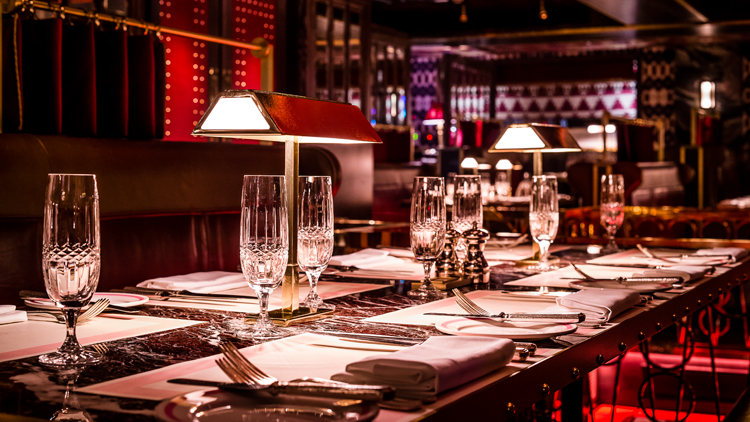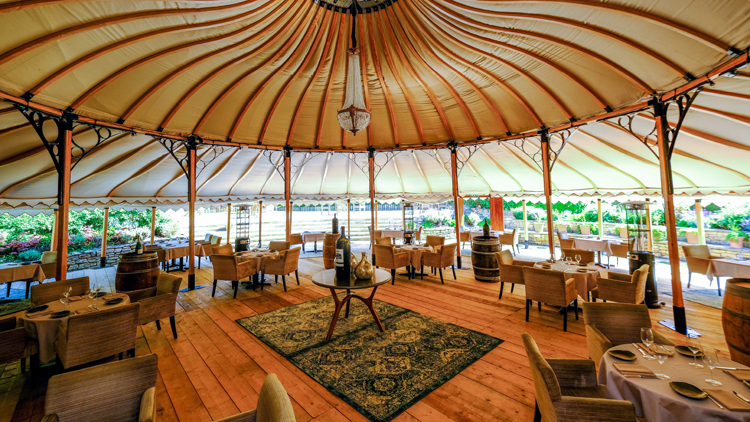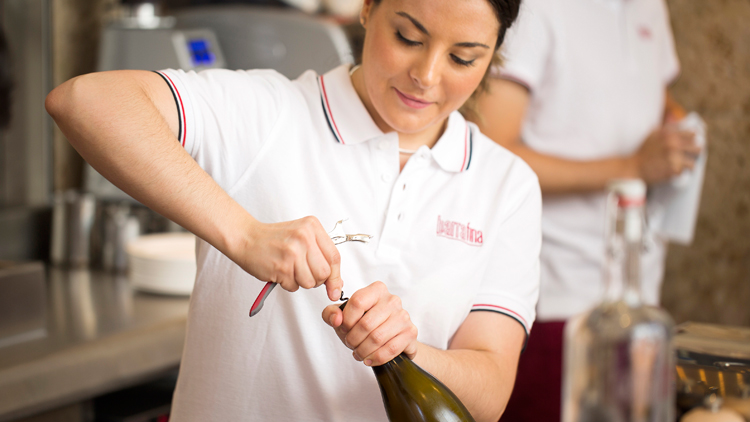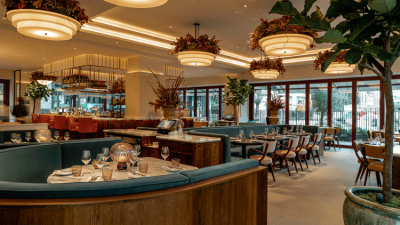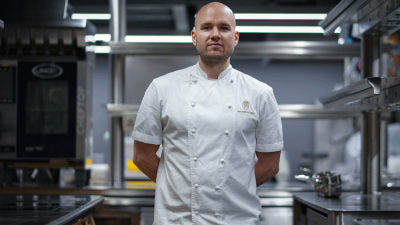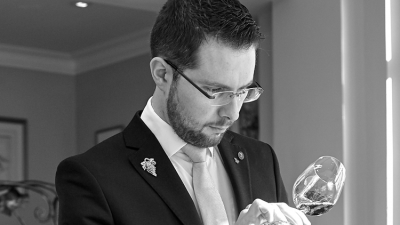One sheet to the wind: how the pandemic changed wine lists
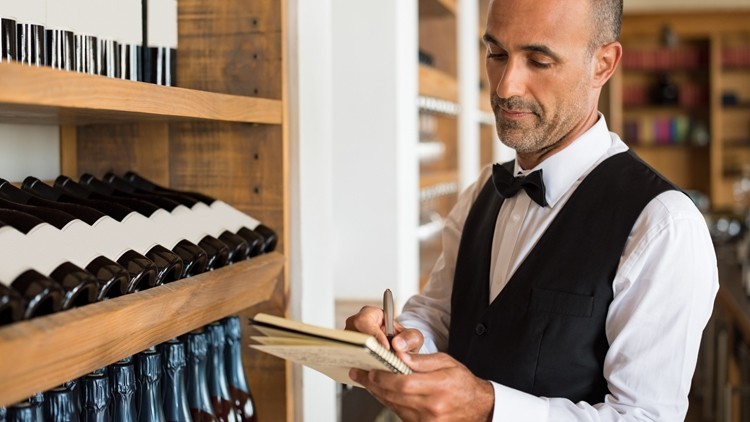
Exciting to some yet intimidating to others, the thwack of a heavyweight wine list hitting the table is now largely absent from restaurant dining rooms.
The pandemic has caused nearly all restaurants that take their wine seriously to drastically rethink their lists. The changes are partly down to basic safety measures – passing lists from table to table is clearly no longer an option – but it’s mostly about cashflow.
In the current climate restaurants need cash in the bank rather than tied up in the cellar. Lists are getting shorter – often no more than a single side of A4 – with references that are no longer needed returned to suppliers to reduce debts.
Restaurants with valuable cellars they have been building for years and even decades are, in some cases, liquidating their liquid assets by selling off the rarities they’ve been sitting on to private buyers.
This would have been virtually unthinkable for most post-pandemic – if managed correctly a cellar of gracefully aging wine can be a restaurant’s biggest asset – but desperate times call for desperate measures.
Making every penny count
Hammersmith restaurant Sam’s Riverside is a case in point. When it opened at the tail end of last year the restaurant’s wine list boasted close to 100 bins; post lockdown this number has dropped to a little over 30.
“Every penny counts now. We can't have any money tied up in stock unnecessarily,” says founder Sam Harrison. “Whether food or wine, every single item has to earn its place.”
“We had some great wines but some of them were not the sort of thing that turn very quickly - maybe one or two bottles a month. It’s a major edit but we've ended up with a list that still offers the customer great choice.”
Harrison was able to return a lot of his stock to his various wine suppliers, allowing him to significantly reduce the amount he owed during lockdown.
He initially set himself the challenge of just 10 reds and 10 whites. With a dozen whites and 10 reds he hasn’t quite succeeded but the extra two whites are justified by his new menu, which is focused on seafood and largely served on the restaurant’s riverside terrace.
The range of prices offered is comparable. Entry level remains at £25 and the list tops out at £125 for both red and white with a cash margin approach at the top end allowing the restaurant to offer great wines at tempting prices (a 2014 St-Julien Grand Cru Classé and a 2016 Meursalt 1er cru).
“It makes sense to continue to have wines like these available,” says Harrison. “If everything was under £50, we'd be missing out on some good sales. This is an affluent area and people are looking to treat themselves.”
Restaurants are shortening lists primarily to reduce holding stock, but bijou lists also reduce admin - purchasing, cellar organisation, stock takes and so on – which is good news for venues operating on lower staff numbers to make ends meet.
A smaller list has also allowed Harrison to use a single wine supplier. This is another big tick for efficiency, but it also gives Harrison a far stronger negotiating position when it comes to price and - as importantly at the moment - credit terms. "It allows us to offer the customer good value while simultaneously giving ourselves the margins we need to survive,” he says.
Bob Bob Ricard has made its svelte yet heavy-hitting wine list even more concise
Less is more
Soho restaurant Bob Bob Ricard has always been able to fit its heavy hitting yet notably good value wine list onto a three-fold piece of A3 but the pandemic has caused owner Leonid Shutov to make it even more focused. The list has gone from a little over 200 to around 100 references (the physical dimensions of the list remain the same but the font size has increased significantly).
“It’s partly about reducing our stock holding and avoiding all the extra work that’s generated by having lots of different wines at the restaurant. But it’s mainly about being practical about the selection we offer and providing the customer with incredible value," says Shutov, who has also brought back Bob Bob Ricard’s headline-grabbing policy of capping mark-ups at £50 a bottle, meaning that many wines at the glitzy Upper James Street restaurant can be had for less than their typical retail price. For example, a bottle of Dom Pérignon 2010 can be yours for just £138.
Though very tempting for fine wine fans, the model is not without its challenges. Faulty bottles (or bottles that are perceived by the customer to be faulty) are problematic. In most other restaurants, the big margins on expensive bottles of older wines are partly there to cover the cost of duds, but Shutov has no such safety net.
“A few spoiled bottles can really put us back financially, the model only works because we do such high volumes of fine wines," he continues. "This period has given us the confidence to really curate the list. I don’t see the point in having a wine list with 50 chardonnays. There’s going to be overlap and even a great sommelier is going to be hard pushed to really explain the differences when things are from the same place and from the same vintage.”
The strategy is to find a single great wine from a great producer rather than list multiple vintages, resulting in tight selections for each of the wine menus core segments that provide a pragmatically broad range of price points. For example, the Bordeaux section has a dozen wines starting at £35 for a 2016 Bordeaux Supérieur and moving up in relatively small increments to top out at a £248 Château Palmer 3ème Cru Margaux.
“The aim now is to find a solid vintage at a great price that’s drinking beautifully now. We’re showing people were the best value is. There are of course other great Margauxs that will deliver something similar, but why offer a selection when you can focus on one that’s one of the best in class.”
Sadly the pandemic has not had much of an impact on fine wine pricing with the drop in restaurant sales being made up for by more consumption in the home. It is having a big impact on Champagne consumption. With little to celebrate this year sales are down across the board and the big houses are putting pressure on growers to decrease yields but – Shutov says – this has yet to have a significant impact on prices. “It makes no sense at all. I'm currently arguing with my Champagne houses about prices.”
The Vineyard Hotel has launched a new dining concept called Inside Out that offers a heavy edit of its 3,000-strong long list
Cutting back on buying
As the name suggests, The Vineyard Hotel in Berkshire has a big focus on wine (it was founded by businessman and vineyard owner Sir Peter Michael). It has one of the most vaunted and extensive wine lists in the country, but even it has looked to change things up post lockdown.
While multi award winning head sommelier Romain Bourger hasn’t returned any wine, he has - well, nearly - stopped buying it.
"We have a large list but that means I rarely buy large amounts of a single wine, so we don’t have quite as much wine on site as one might expect,” he says.
Following lockdown, the hotel launched a more relaxed, pavilion-housed dining concept called Inside Out. It offers a wine list with 130 references. That might sound like a lot, but it’s a major shift in approach for an establishment that usually hands each table a 3,000 strong, leather-bound list.
The long list is still available, with guests asked to sanitise their hands before diving in (as an extra precaution each list is quarantined for 48 hours after use).The regularly-changing selection for the short list is cherry picked from the long list and presented on a two-sided single-use A4 sheet.
“It’s a fun and more approachable way of doing things,” says Bourger, who was named Taittinger UK Sommelier of the Year 2019. “Our long list is arranged in the standard way by country and appellation, but the shorter list is arranged by style.”
Fewer options make it easier and quicker for guests to order and significantly reduces the head count required for wine service.
The service of the wine has changed too for a mix of safety and staffing reasons. The bottle is presented at table (but at a distance), a taste is offered and then the bottle is left on the table.
“It’s a big change. The environment is completely different. There's less interaction with the guests, so we have to make the interactions we do have count even more.”
“We’ve had one or two tables say they'd rather we serve, which we can of course accommodate,” says Bourger, who is for the most part enjoying the considerable shake up the pandemic has necessitated.
“I enjoyed trimming down the wine list to those 130 bottles. It was challenging but it has resulted in a far more personal list. The Vineyard Hotel opened in 1998 and we’ve had a lot of different sommeliers. Some of their wines remain in the cellar. The good thing about this list is that all the wines are my picks.”
A more accessible wine program
The Laughing Heart owner Charlie Mellor has also enjoyed the process of trimming his list. The main selection at the east London restaurant has gone from around 300 to 60 references. Running alongside the main list is a small but wide-ranging selection of ‘private collection’ that Mellor could not bear to give up.
"It's always been an interesting game that I've played - I've never had any money, but I've always had a lot of wine. That's a complicated combination of things to manage," says Mellor.
As well as reduce The Laughing Heart’s holding stock, the new list has been designed to make the restaurant wine program more accessible with an emphasis on more affordable wines.
"It will enable us to rebuild the cellar over time," Mellor continues. "It means that we're not making commitments to our suppliers that we're not able to honour right now.”
"In theory I'm still working with anyone and I like the idea of being able to support lots of different importers by placing small orders here and there. But I also like to support them by being able to pay on time."
Inline with may other restaurants, Barrafina's wine offering was already tight so no changes have been necessary
Concise and on trend
Rollo Gabb – the boss of South African winery Journey’s End and a major investor at London’s The Hart Group - believes the pandemic has accelerated a trend for more concise lists that has already been gathering pace for a number of years.
“Big wine lists are a bit 90s. Most customers don’t need a 20-page wine list. You can do pretty much the same job with a tighter list,” he says.
Gabb hasn’t really changed the wine lists at Barrafina or the group’s Mexican places Casa Pastor and Plaza Pastor as he says they were quite tight anyway, but he has made major changes at famed Soho restaurant Quo Vadis.
The wine list at the Dean Street restaurant is now presented on a single piece of A4 but draws from the whole cellar in a similar way to The Vineyard Hotel. The list changes regularly to rotate through the stock and add interest for the customer.
“It’s a tough environment we find ourselves in,” says Gabb. “At Quo Vadis we are looking to incentivise people to trade up a bit more. We want people to come in and be able to get an extremely good glass or bottle of wine at a ridiculously good price.”
Restaurateur turned critic and restaurant commentator Nick Lander believes that the switch in wine sales from businesses to households will make consumers more knowledgeable than they were about costs and, therefore, less likely to accept a restaurant’s large mark-up on wines.
While many restaurants will be tempted to increase margins to get through these difficult times, offering value for money is likely to be a more viable strategy in the long term.
“At Quo Vadis we’re giving people lots of ways into the lists with a larger selection by the glass,” says Gabb. “We’re also taking a cash margin approach for much of the list to give people a great deal.”
